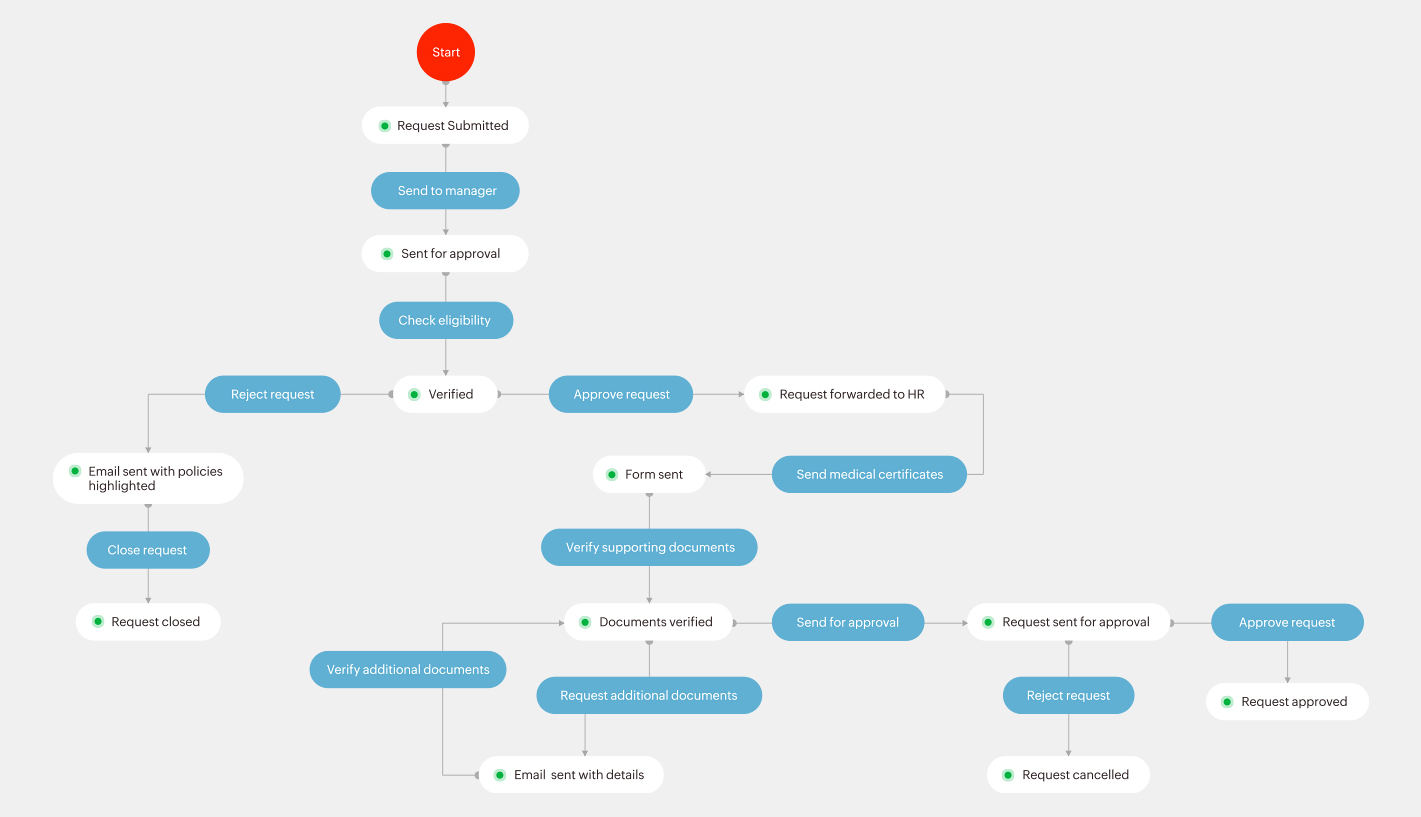As businesses and organizations grow, review and approval processes become increasingly important for ensuring quality and consistency. These processes come with multiple stakeholders, stages, and iterations, making them challenging to manage and execute.
However, with the right tools and techniques, these processes can be streamlined for everyone involved.
Understanding how an approval workflow works
Approval workflows are processes that involve the submission of a document, proposal, or request for review, and approval by one or more stakeholders. These stakeholders can be internal or external to the organization and may include managers, clients, partners, or regulatory bodies.
An approval workflow typically includes a set of predetermined stages, each of which must be completed before the document or proposal can proceed to the next stage. This ensures that each stage of the process is thoroughly reviewed and approved before moving forward.
Here's an example of an approval workflow.

Benefits of using an approval workflow
Using an approval workflow can provide several benefits, including improved quality control, increased efficiency, and better communication.
By defining a clear approval workflow, stakeholders can ensure that all necessary steps are taken and that nothing is missed. This can improve the quality of the final product or service and reduce the risk of errors or omissions.
Additionally, a well-defined approval workflow can help teams work more efficiently, as they can clearly see what needs to be done and when.
How to build an efficient review process
Define clear guidelines
One of the main reasons review and approval processes can become burdensome is due to unclear guidelines. Employees may not be sure what's expected of them, which can lead to confusion and delays.
To avoid this, take the time to define clear guidelines for each stage of the process. These guidelines should be easily accessible to all employees involved in the process, and should include information on what's required, how long it should take, and who's responsible for each task.
Use digital tools
Many organizations still rely on paper-based review and approval processes, which can be time-consuming and prone to errors.
By using digital tools, such as workflow management software or project management tools, you can streamline the process and reduce the burden on employees. These tools can automate tasks, track progress, and provide real-time updates, making the process more efficient and effective.
Set realistic deadlines
Another reason review and approval processes can become burdensome is due to unrealistic deadlines. Employees may feel rushed or overwhelmed, which can lead to mistakes and delays. To avoid this, set realistic deadlines for each stage of the process.
Take into account the complexity of the task, the availability of employees, and any other factors that may impact the timeline. By setting realistic deadlines, you can ensure that the process runs smoothly and efficiently.
Empower employees
Review and approval processes can be a hassle if employees feel powerless or disconnected from the process. Empower employees by involving them in the decision-making process to avoid these problems
Encourage open communication, listen to their feedback, and provide opportunities for them to contribute to the process. By involving employees, you can create a sense of ownership and accountability, which can lead to a more efficient and effective process.
Review and improve
Finally, it's essential to review and improve your review and approval processes regularly. Take the time to gather feedback from employees and stakeholders, identify areas for improvement, and make changes as necessary. By continuously reviewing and improving your processes, you can ensure that they remain relevant and effective, while reducing the burden on employees.
They say a good brief can make an approval process smoother. Agree? Read more aboutwhat a brief is and why it's important for project planning here!
Tools for digitizing and speeding up review/approval processes
Workflow management tools can be incredibly beneficial in easing the burden of review and approval processes. These tools can automate many of the manual tasks involved in the process, freeing up time for employees and reducing the risk of errors.
Here are some ways workflow management tools can make your review and approval process easier:
- Centralized systems for review and approval processes allow employees to access information and collaborate on projects in real time.
- Automated notifications and reminders ensure that employees are aware of their tasks and deadlines. This can help reduce the risk of delays and ensure that the process runs smoothly.
- Workflow management tools provide document control, ensuring that the right employees have access to the right documents at the right time. This can help eliminate errors and ensure that the process remains efficient and effective.
- Customizable workflows allow you to tailor the process to your organization's specific needs. This can help ensure that the process is optimized for efficiency and that employees are not saddled with unnecessary tasks.
- Analytics and reporting features help monitor the progress of the process and identify areas for improvement. This can help ensure that the process remains relevant and effective while reducing the burden on employees.







